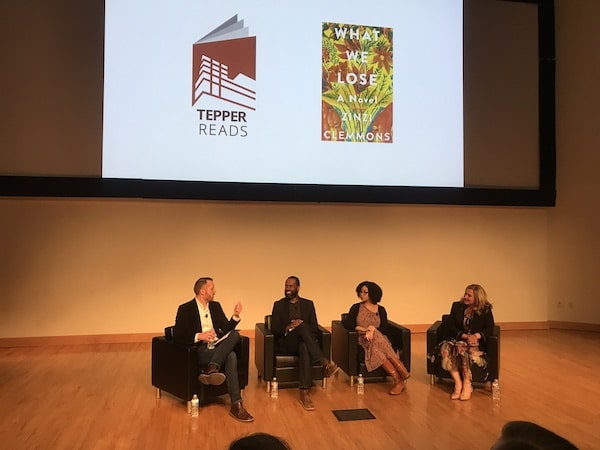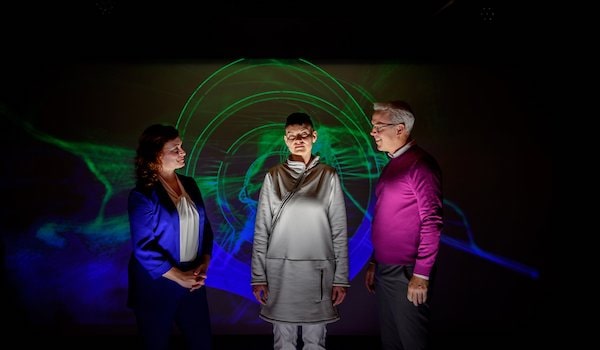Weaving Heart into Our Work
Integrating fine art throughout CMU's curriculum builds intellectual diversity and problem-solving skills
Twenty years ago, John Woolford was teaching molecular biology students at Carnegie Mellon University about a complicated RNA pathway. Woolford was attempting to draw it on the board with chalk when he realized he wasn't doing it very well.
He recalled his colleague Jon Minden's office, strewn with models of molecules in cells Minden's students created. Woolford decided his students would learn the material better if they created a tangible molecular pathway rather than study a drawing.
"I copied Jon's idea," he said.
Woolford's project is part of an intentional interdisciplinary culture at CMU, where faculty throughout every college are integrating the arts to deepen students' learning across a variety of subjects.
Over the years, Woolford’s students have crafted puzzles, pop-up books, videos and mobiles representing different molecular pathways. He's gathered sheet music — Spliceosome in A, an original composition a student performed on guitar — and colorful ribbons with dangling Shrinky-Dink RNA combinations. "One student even created an interpretive dance," Woolford said.
Professor John Woolford loves seeing how his students integrate their cultural backgrounds and personal passions into their molecular biology art projects. Here, Jeffrey Beyon and Boris Kobilja have created a faux nature documentary about Translation Initiation.
"Molecules carry out functions together, just like people," Woolford explained. "Our bodies function thanks to teams inside us working together to carry out processes. I want students to think about that."
Every semester, Woolford sees his students supporting one another as they present their projects and build camaraderie. Even though the class sees the same pathway depicted over 20 times as students present their work, Woolford said, "each student sees the project a little differently. We all learn to look at the molecules from different perspectives."
So you think you can conduct? On February 14, MBA candidates gave it their best shot with a little help from the Tartan Tuba Band.
Fostering Empathy Through Fine Arts
Leanne Meyer, executive director of the Accelerate Leadership Center in the Tepper School of Business, didn't set out to organize an improv group for MBA candidates. But she noticed her students were scoring low on empathy when given emotional intelligence assessments at the beginning of their program. She began to seek out ways the curriculum could help them to be more thoughtful and less transactional.
"We want people to know what it means to stand in someone else's shoes," she said.
A grant from the Citrone family funds the SHIFT program — a series of opportunities for Tepper students to incorporate fine arts alongside business coursework. Now in its second academic year, SHIFT offerings have ranged from musical jam sessions to virtual reality simulated intercultural communications.
Tepper is one of the only MBA programs in the world to run a book club. Every semester, students have the opportunity to read and discuss a work of fiction and later meet the author. Students who take their MBA coursework remotely have the opportunity to engage with the novel through a podcast the school produces.
Learn more about visiting author Mohsin Hamid
Tepper students also practice writing poetry as a way to build precision of language. In the fall, the Tepper lounge space hosts an art exhibit curated by the Miller Institute of Contemporary Art. Tepper staff places conversational prompts around the tables, asking students "why do you think the artist chose this medium" or "why do you like this piece of art?"
"The students learn to appreciate art, but they're also given the opportunity for low stakes debate," said Meyer. Within a competitive program, students don't often get the chance to disagree with one another in a productive way. Meyer loves creating new opportunities for students to build communication skills.
"We are seeing a remarkable sense of community building in our students," said Meyer. She notes that all self-awareness measures have increased since her students began the SHIFT program. Meyer said, "We are infusing empathy into the heart of leadership training so that our students develop a natural and instinctual reflex to try to understand another person’s point of view as they seek innovative solutions to challenges in the workplace."
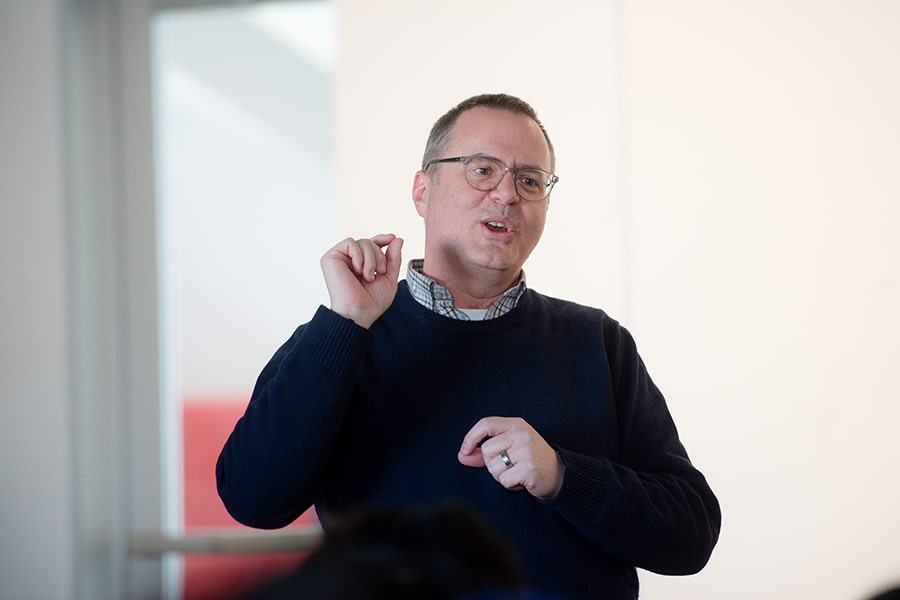
School of Music professor Lance LaDuke explains to MBA students that a musical score is a business plan. A conductor must ensure the score is a good fit for the team and learn the plan inside and out.
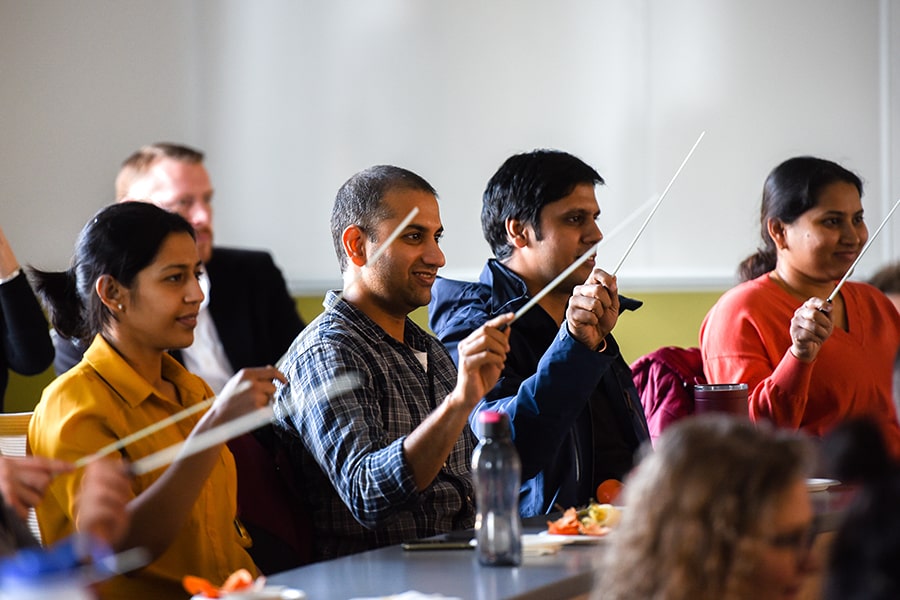
Tepper's SHIFT workshops enable the MBA program to focus on the human side of business leadership. SHIFT partners with subject matter experts from throughout the university to guide MBA students through creative opportunities that enrich the business curriculum.
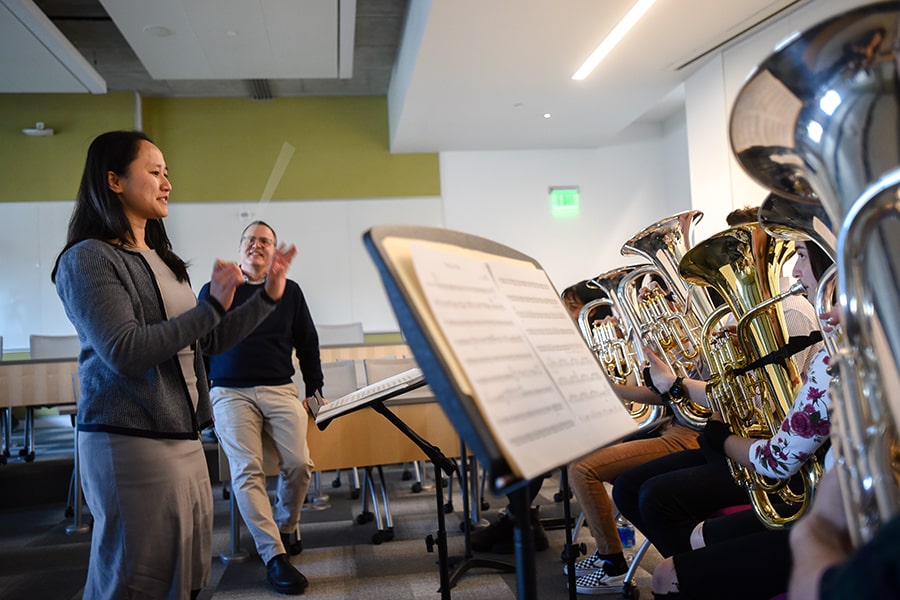
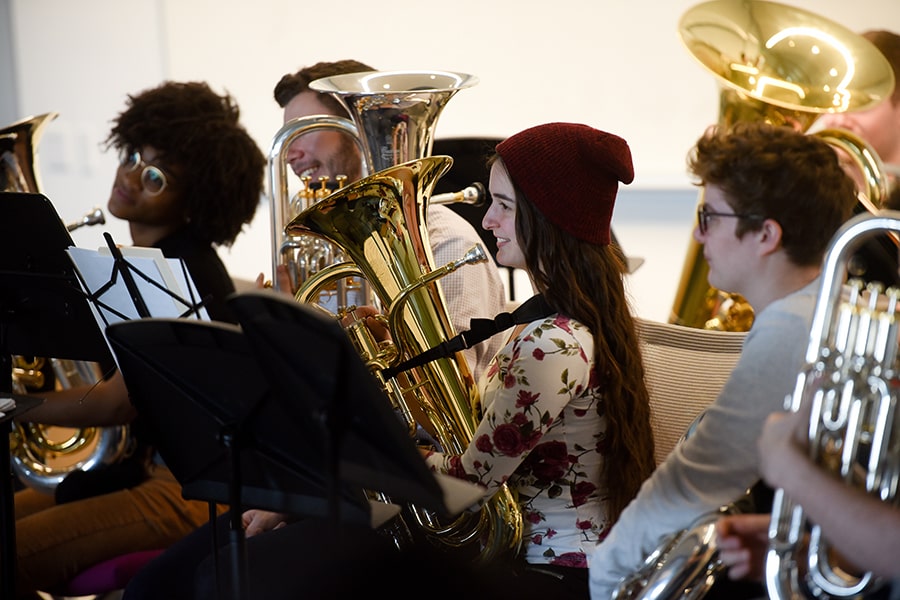
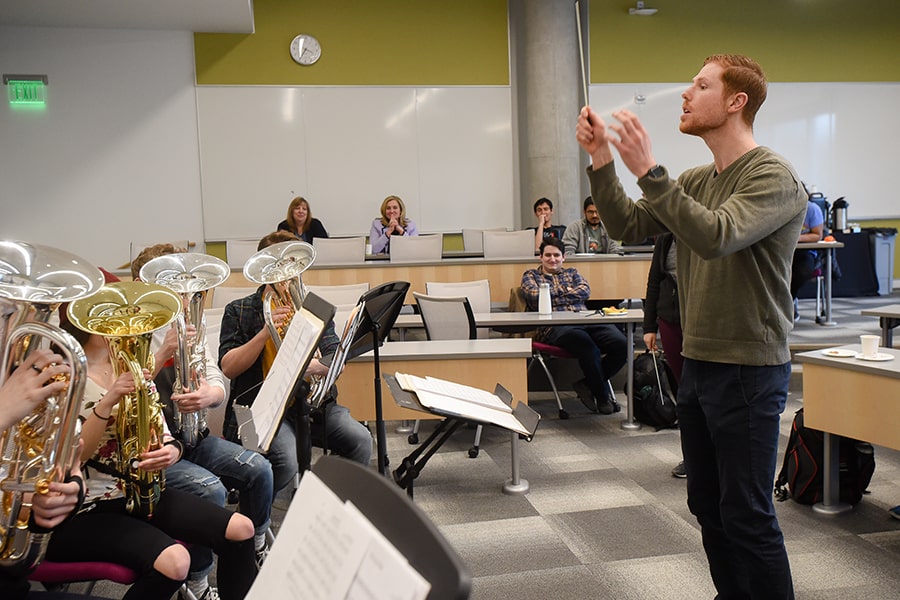
The conductor and the musicians must all agree that the point of the baton (called the ictus) is the starting place for their shared conversation. LaDuke explains that the hand that holds the baton Is the organizer. The other hand is the one that helps give meaning and relevance to the score.
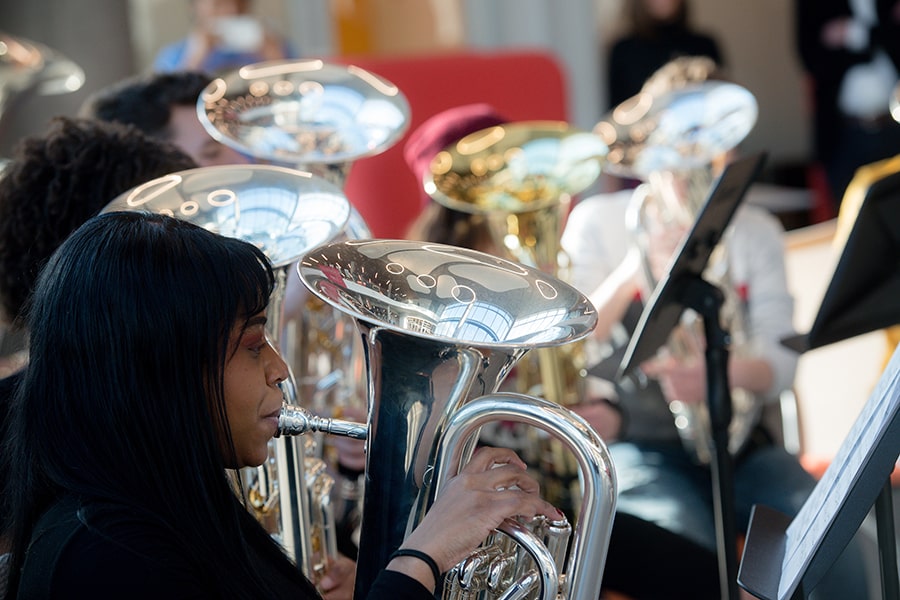
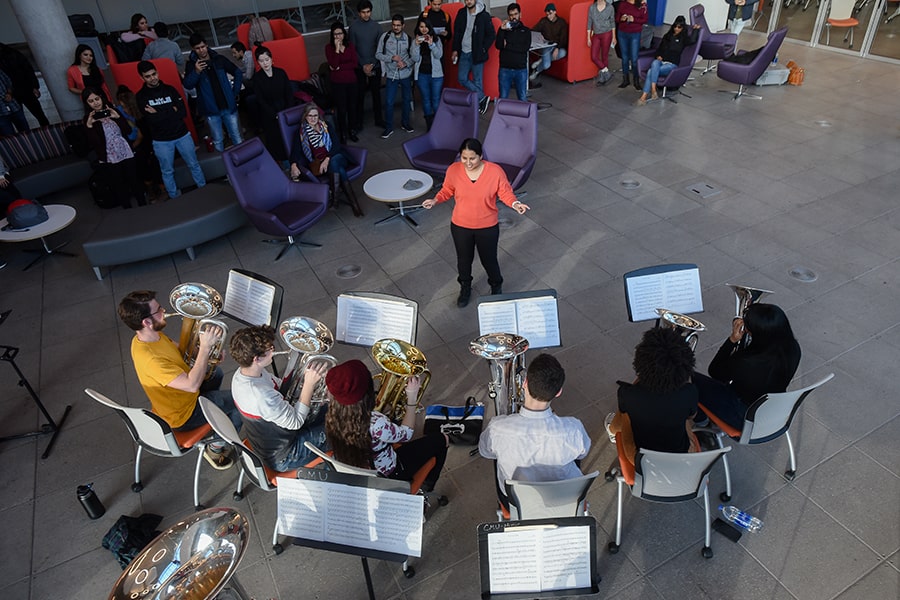
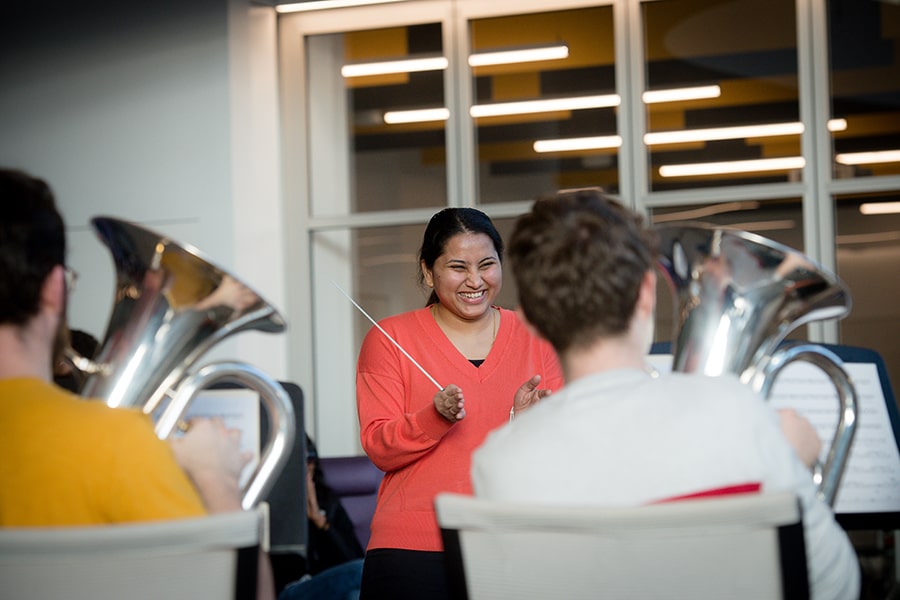
Pivoting Between Passions
Other CMU faculty echo Meyer's observation that arts integration leads to more well-rounded graduates. Dan Green, director of the Master of Entertainment Industry Management program (MEIM, a joint program between the Heinz College of Information Systems and Public Policy and College of Fine Arts) said, "Our students shine when they leave our program because they are nimble problem-solvers, able to maneuver through a changing industry."
The MEIM program brings together students with creative backgrounds and those with a quantitative focus and guides them through an interdisciplinary curriculum that exposes them to many ways of thinking.
Green's students begin their work in the classroom at the Pittsburgh campus and transition to Los Angeles for full-time internships throughout the entertainment industry. All students in the program, whether they enter as script writers or economists, take the same core curriculum classes together and have the same set of elective options.
Green said, "Because our focus is commercial entertainment, our curriculum marries arts with analytics, finance with creative script development … often our students realize their passion lies in a different direction than they originally thought when they enrolled."
Brett Ashley Crawford, associate teaching professor of the Master of Arts Management program, has seen similar discoveries of students' true passions. She said, "Our post-graduation statistics indicate people don't stay in their domains — they often pivot. We create space for people to be multilingual in terms of their creative discipline."
Crawford notes that graduate programs in general tend to be very siloed. CMU students benefit from permeable membranes between academic fields and Crawford's students are also served jointly by Heinz College and the College of Fine Arts.
Whether they're interested in managing theaters, dance companies or art museums, Crawford said, "Our students take statistics and data analytics alongside people for whom those subjects are their primary focus, and add an intellectual diversity balance to Heinz College courses. All of them gain the benefit of seeing how concepts are applied in different ways, across disciplines."
Crawford has seen firsthand that blending together different coursework and different types of students creates rich opportunities for growth. She said CMU's intentional interdisciplinary programming "gives all students an opportunity to understand the world differently."
